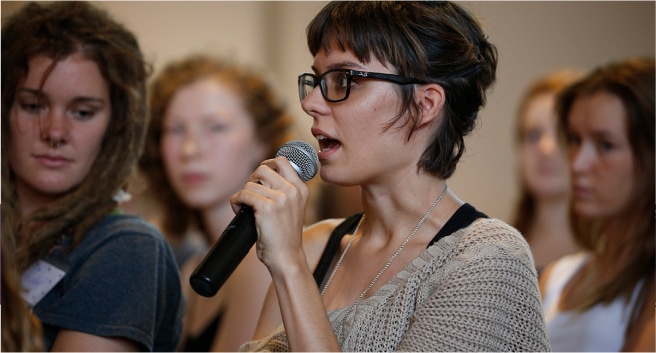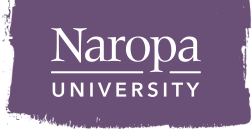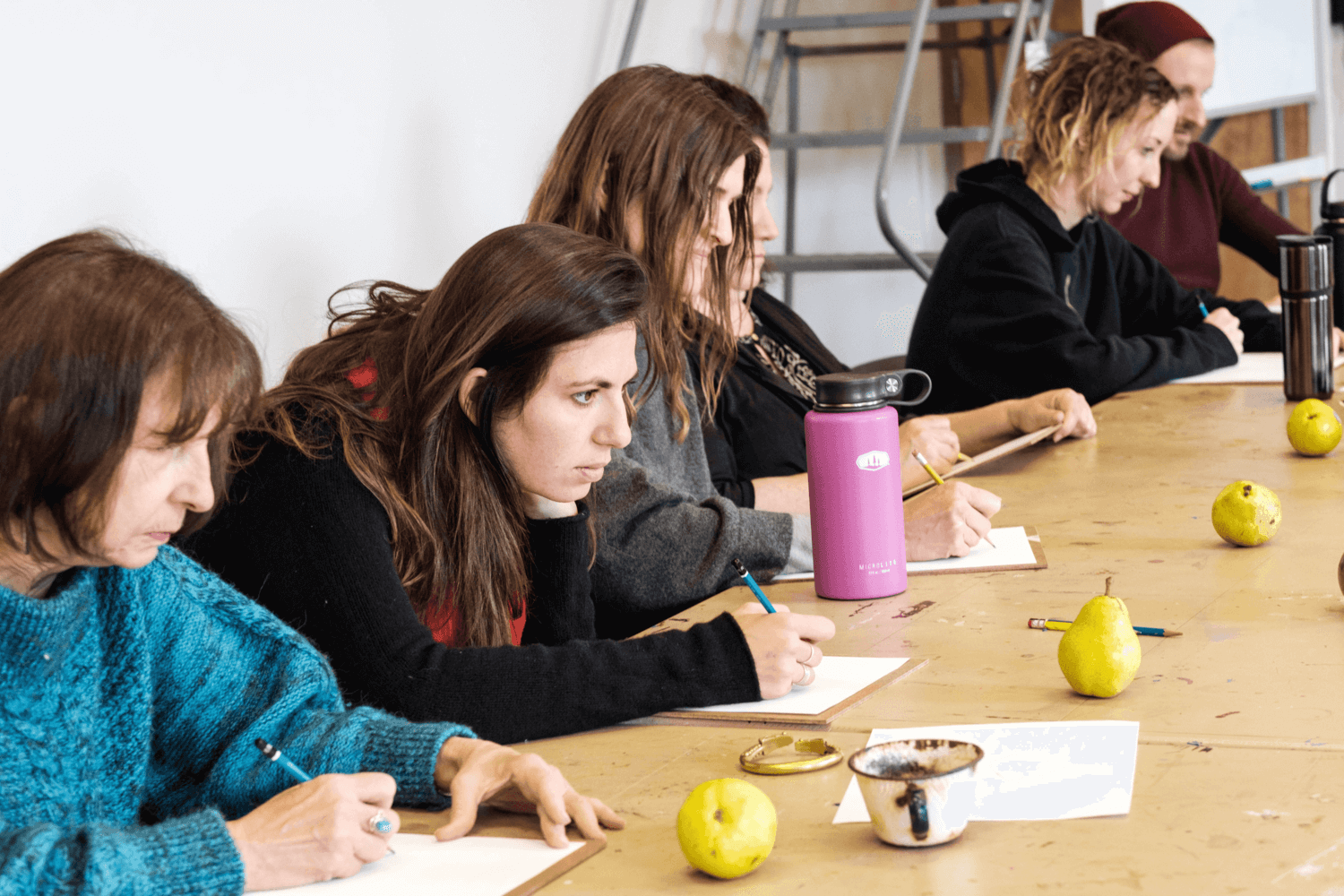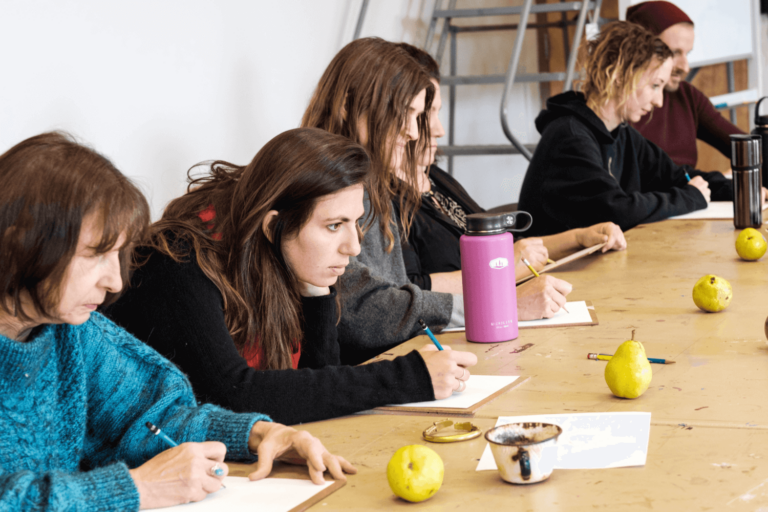BA in Visual Arts
Visual Arts Degree
Program Overview
The visual arts major goes beyond endorsing a technique or style; it trains students to combine inner imagination and outer observation. Students develop confidence in creative vision and the technical proficiency and critical thinking to express that vision.
Whether they’re fine-tuning their figure drawing, throwing clay on a pottery wheel, or writing an artist statement, our students approach their work with authenticity and introspection.
The Visual Arts program offers a Bachelor of Arts in Visual Arts, as well as a minor and certificate program in Visual Arts, a minor in Film and Media Studies, and a minor in Contemplative Art Therapy.
Contemplative Approach
Contemplation and visual art training are interwoven as the foundation of the Visual Arts program at Naropa. Our visual art degree is uniquely founded in contemplative traditions that weave into both the creation and expression of visual art.
Setting for Artistic Exploration
Named one of the Best Visual and Performing Arts Colleges in Colorado in 2020, Naropa takes great pride in its fine arts legacy. Naropa is committed to creating fertile ground for undergraduate artists to explore their artistic vision. The campus features four visual art galleries, a 2D art studio, a recording studio, an art library, and studios for pottery, sculpture, and media arts.
Supporting Community
Early on, faculty and mentors will push you to experiment with form, method, and technique, supporting students’ artistic freedom. The foundation of this risk-taking is a solid community of undergraduate visual arts students, graduate mentors, and supportive faculty.
Quick Facts
- On-campus Degree
- Named one of the Best Visual and Performing Arts Colleges in Colorado in 2020.
- 36 credit hours
- 4 on-campus art galleries
- 4 gallery shows with international/national and/or regional artists per year
- 1 graduation show each May
- Contemplative practice
- Admissions open for 2024
Program Format
Naropa University’s undergraduate program is a four-year, fully accredited Bachelor of Arts Degree program. The visual arts degree is a 36-credit major that includes studio electives in several painting media, calligraphic forms, sculpture, pottery, and photography. Required courses in drawing, world art history, contemplative and studio practice, and professional preparation form the foundation of the degree. Students are mentored in Advanced Studio Practice, Warrior Artist, and Portfolio and Gallery Presentation. The final project includes a digital portfolio, an artist’s statement, and an exhibition in the Nalanda Art Galleries.
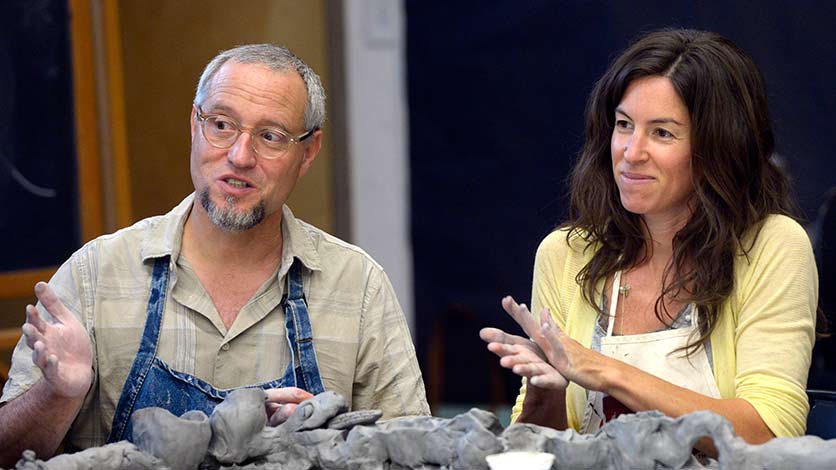
Course Spotlight
The Contemplative Artist
At the core of the term “contemplative” lies the essence of observing and seeing. Originally associated with divination, it referred to an open space designated for observation. Contemplation involves a thoughtful and meditative form of observation. Through mindfulness meditation, studio assignments, and selected readings, students delve into the art’s cosmology, exploring its genesis, the intricacies of perception, cultural influences, and the convergence of the personal and public in an individual’s aesthetic sense.
Degree
Requirements
A Bachelor of Arts degree (120 credits) consists of a Core Curriculum (24 credits) and at least one major as well as minors and/or elective courses of the student’s choosing.
The Visual Arts Major has a total of 36 credit hours.
Visual Arts Degree Requirements
Gateway
ART-101 2-D Design: Art Techniques and Experimentation(3)
ART-125 Introduction to Drawing(3)
ART-200 The Contemplative Artist(3)
ART-301 Reconceptualizing Art History(3)
ART-340 Contemporary Art History 1945 to Present(3)
Art Genres: Choose 12 credits
ART-102 Contemplative Ceramics: Form and Human Contact(3)
ART-105 Art and Consciousness: Mixed Media & Self-Exploration(3)
ART-132 3-D Ephemeral Art(3)
ART-155 Figure Drawing(3)
ART-180 Sculpture(3)
ART-215 Watercolor(3)
ART-245 Introduction to Painting: Realism(3)
ART-285 New Forms in Ceramics: Advanced Skills in Historical Clay Techniques(3)
ART-311 Mixed Media(3)
ART-325 Drawing II: Precision, Perception, and Form(3)
ART-345 Painter’s Laboratory(3)
ART-355 Eco-Art(3)
ART-360 Contemplative Photography(3)
ART-455 Making Conscious Media(3)
ART-490 Special Topics in Visual Arts(3)
ART-499 Independent Study: Visual Arts(0.5-4)
TRA-120 Ikebana/Kado I(3)
TRA-220 Ikebana/Kado II(3)
Milestone
- ART-385 Advanced Studio Practice(3)
Capstone
ART-440 Warrior Artist: Risk and Revelation in Studio Art(3)
COR-440 Capstone II(3)
Why Choose Naropa?
Contemplative Education
A Naropa education is unlike that which you might find at other schools of art. Rather than promote a specific method, Naropa’s visual arts curriculum asks you to look within for creative vision and then apply yourself to learning the artistic techniques that will bring your vision to life.
Enrichment Community
Your artistic and personal growth will be supported by a community of other artists, performers, scholars, writers, and healers. When you present your culminating work at the Naropa Gallery through the Portfolio & Gallery Presentation course, you’ll celebrate that growth among friends, family, and your arts community.
Scholarships and Financial Aid
Cultural diversity is one of the main pillars of Naropa University. Because we want to welcome as many students as possible, undergraduate students can find scholarship opportunities as well as financial aid, including student employment.
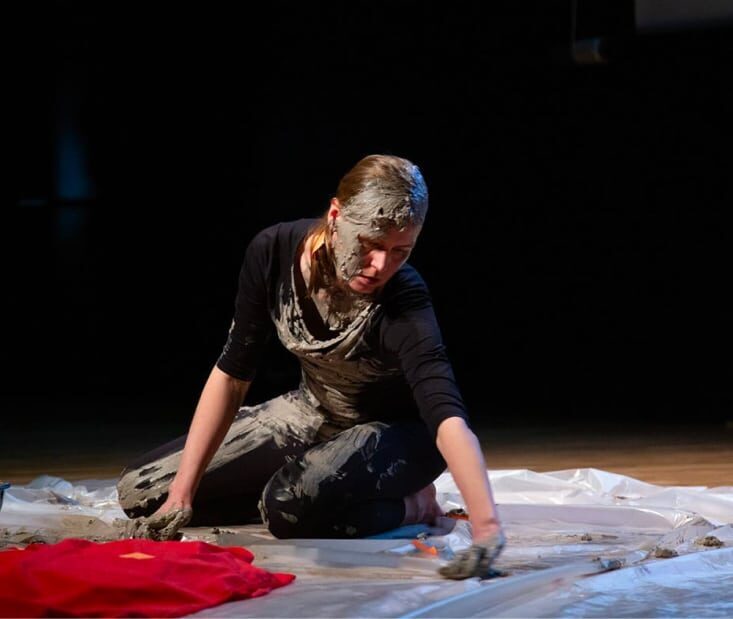
How this Program Prepares You
Introspective Approach
This program will teach you how to take risks that help your inner artist grow.
Whether you’re fine-tuning your figure drawing, throwing clay on a pottery wheel, or writing an artist statement, you will approach your work with authenticity and introspection with Naropa’s Visual Arts BA contemplative approach.
Careers in Visual Arts
Naropa’s visual arts school will teach you more than just the skills and techniques of creating art. You’ll also learn how to succeed as an artist in the world. Let us help you find your unique artistic path.
Artistic Development
Artistic freedom is integral to Naropa’s visual arts program. You will be motivated to experiment with form, method, and technique by a dynamic community of visual artists, writers, scholars, and thinkers.
What You'll Learn
Mindfulness
Engage more deeply with your art through meditation and self-exploration.
Artistic Community
Join a dynamic community of visual artists, writers, scholars, and thinkers.
Artist Portfolio
Design and assemble a portfolio of your best, most authentic work.
Fluency in Artistic Language
Learn to speak about your art and the role of art in culture.
Exhibition Experience
Present your work at the Naropa Gallery in the company of fellow artists.
Career Opportunities with a Visual Arts Degree
Naropa’s visual arts graduates continue to create and exhibit their art both regionally and nationally. Many graduates go on to pursue advanced degrees in art, art therapy, and art history. Others find rewarding careers as photographers, arts administrators, designers, entrepreneurs, art teachers, or professional exhibiting artists.
- Director: bring scripts to life.
- Photographer: create compelling visual stories.
- Art Director: shape captivating visual styles across diverse media.
- Musician: express emotions and stories through music.
- Special Effects Artist: enhance visuals for films and artistic projects.
- Craft Artist: create unique handmade objects with diverse materials and techniques.
- Graphic Designer: visually communicate ideas through effective designs.
- Talent Director: recruit and develop a team of individuals with exceptional abilities.
- Fine Artist: create expressive visual works using diverse mediums.
- Dancer: express emotions through skillful and expressive movement.
FAQs About the
Visual Arts Degree
What can you do with a visual arts degree?
Does a visual arts degree help with interior design?
What is the difference between a visual art degree and other art degrees?
Learn More About the Program

Connect
with your counselor
Rachel Thompson
Assistant Director of Undergraduate Admissions
Prospective students with last names A-G
- 303-970-9831
- rachel.thompson@naropa.edu
- Schedule Appointment

Connect
with your counselor
Jenna Priest
Prospective students last names H-Z
Ready to Apply?
Admission Requirements
Academic distinction and the willingness to carry out introspective work is highly valued at Naropa University.
Learn more about Naropa’s admission requirements and application process.
Undergraduate Students
Students with a 3.0 GPA or Higher
Applicants with a strong academic record are welcome with minimal requirements.Students with Less than 3.0 GPA
If your academic performance hasn’t been as strong, but you wish to benefit from a Naropa education and contribute to our growing community, we strongly encourage you to submit your application.Transfer your college credit
Present an official college transcript together with your application to apply as a transfer student and transfer 60 or more credits.
To learn more about requirements for first-time and transfer students, read our undergraduate students requirements page.
International Students
Regardless of where you’re coming from, Naropa can be your second home. Our commitment to diversity and inclusivity is a core value, and we embrace the richness that different cultures bring to our community. Find out how to apply to Naropa as an international student.
Costs and Financial Aid
Naropa offers generous scholarships, grants, and financial aid to help as many students as possible experience our contemplative educational approach.
Use Naropa’s Net Price Calculator to estimate your potential expenses and get an idea of your financial commitment to attending Naropa.
Undergraduate Scholarship Opportunities
